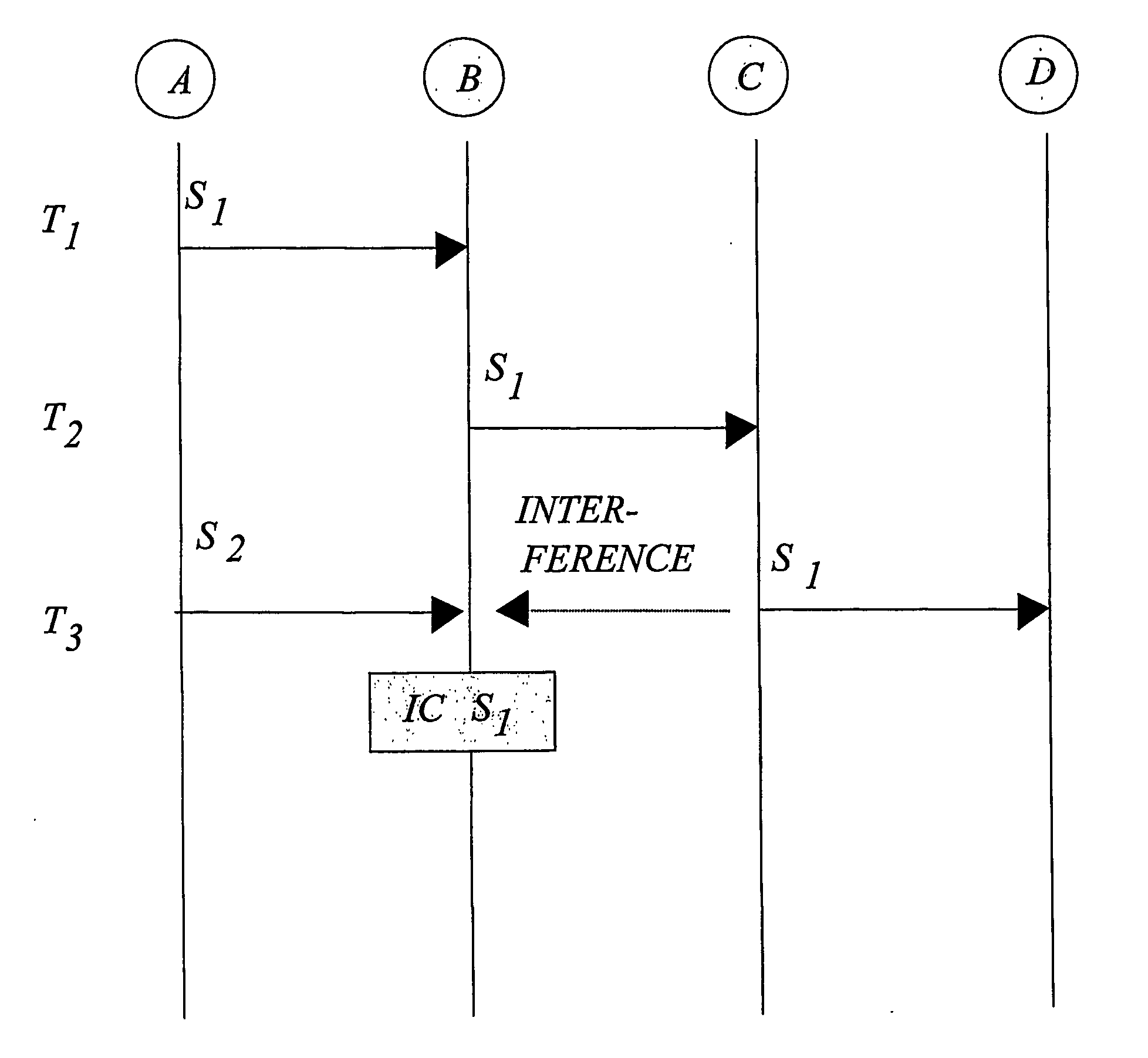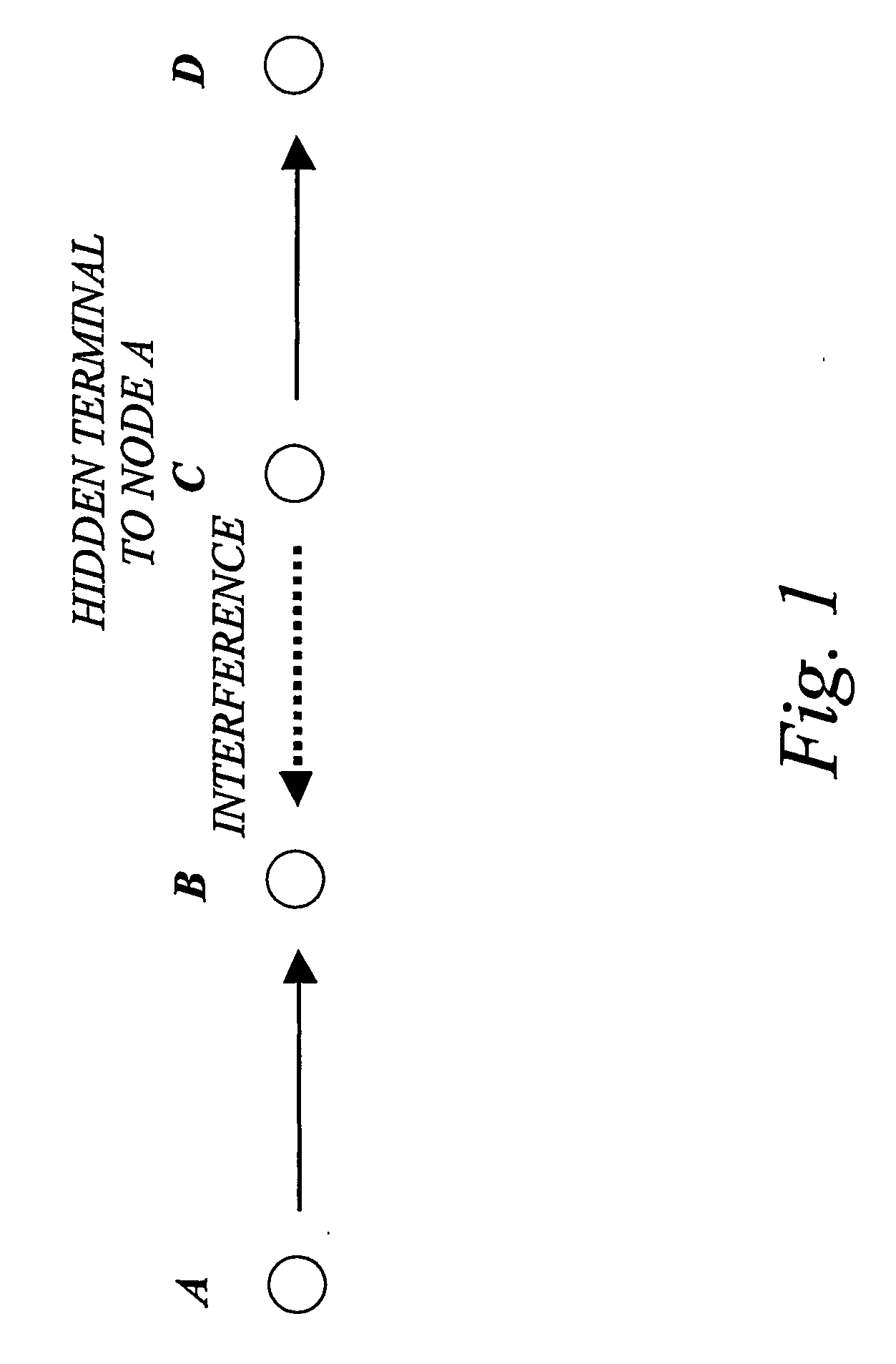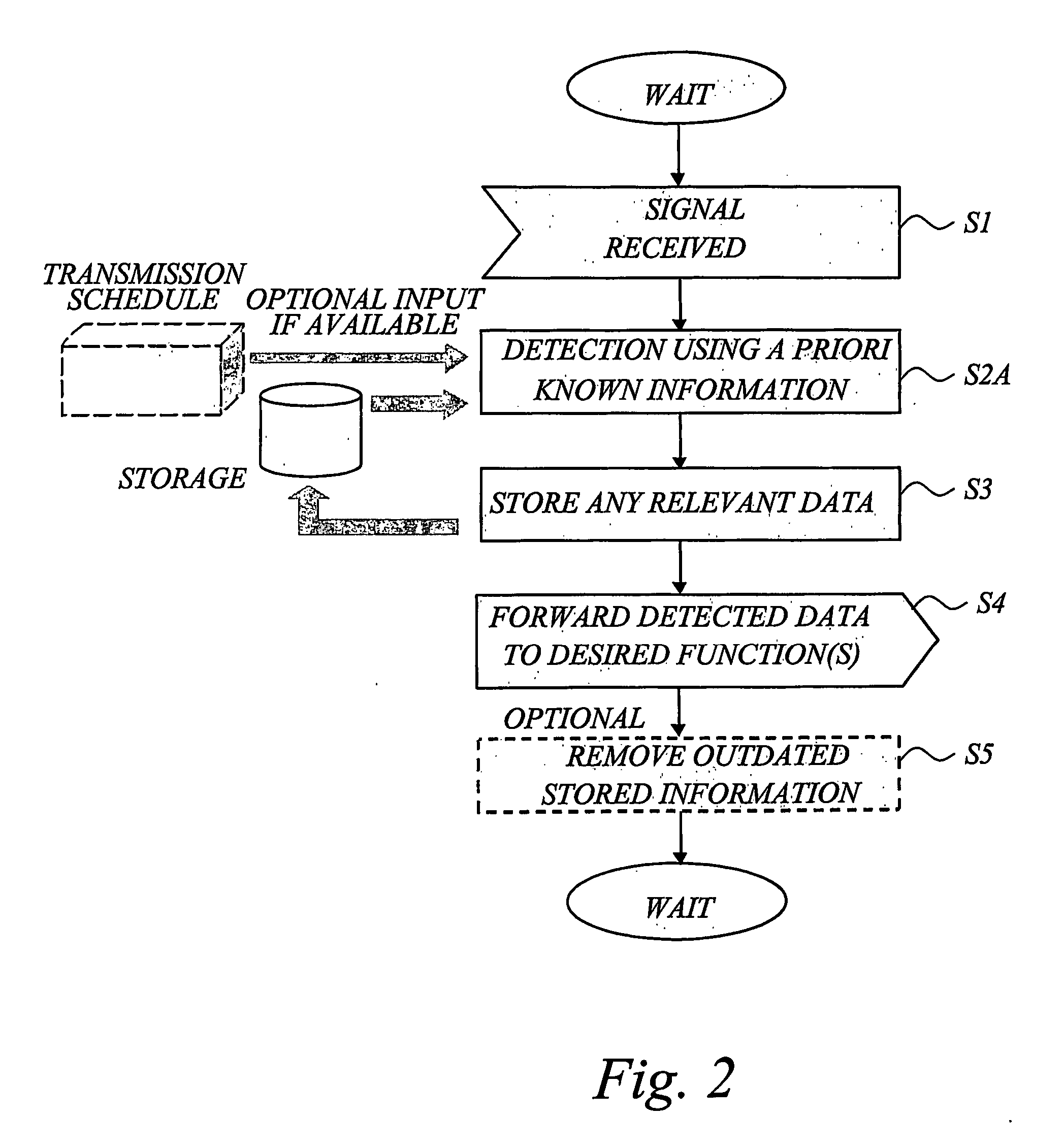Interference cancellation in wireless relaying networks
a wireless relaying network and interference cancellation technology, applied in the field of communication networks, can solve the problems of reducing the performance of all aspects, affecting the performance of the network, and not being able to guarantee the success of the transmission, so as to achieve effective resolution, improve network performance, and improve the effect of throughpu
- Summary
- Abstract
- Description
- Claims
- Application Information
AI Technical Summary
Benefits of technology
Problems solved by technology
Method used
Image
Examples
Embodiment Construction
[0054] Throughout the drawings, the same reference characters will be used for corresponding or similar elements.
[0055] As mentioned earlier, the state-of-the-art methods are not optimal with respect to throughput and delay. The invention is based on the observation that most interference is caused by packets that are transmitted multiple times over one or more links, especially in wireless relaying networks such as multi-hop networks, cooperative relaying networks and repeater-based networks.
[0056] The invention aims at exploiting already available information in the signal detection process, and is preferably based on: [0057] Storing signal information representative of a first set of information, including at least one data unit to be transmitted in total more than one time over at least one (often more than one) link, as a priori known signal information; [0058] Receiving signal information representative of a second set of information, wherein transmission of one or more of t...
PUM
 Login to View More
Login to View More Abstract
Description
Claims
Application Information
 Login to View More
Login to View More - R&D
- Intellectual Property
- Life Sciences
- Materials
- Tech Scout
- Unparalleled Data Quality
- Higher Quality Content
- 60% Fewer Hallucinations
Browse by: Latest US Patents, China's latest patents, Technical Efficacy Thesaurus, Application Domain, Technology Topic, Popular Technical Reports.
© 2025 PatSnap. All rights reserved.Legal|Privacy policy|Modern Slavery Act Transparency Statement|Sitemap|About US| Contact US: help@patsnap.com



